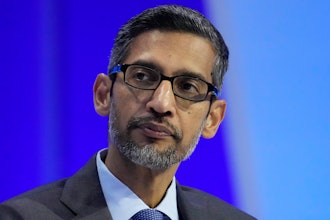
This month, Intel Security released its second annual cloud security report which outlines the current state of cloud adoption, the primary concerns with private and public cloud services, security implications and the evolving impact of Shadow IT. Comprised of survey data from more than 2,000 IT professionals, “Building Trust in a Cloudy Sky” indicates that cloud services now dominate IT operations with more than 90 percent of organizations utilizing the Cloud in some capacity.
“The ‘Cloud First’ strategy is now well and truly ensconced into the architecture of many organizations across the world,” said Raj Samani, EMEA chief technology officer, Intel Security, in a statement. “The desire to move quickly toward cloud computing appears to be on the agenda for most organizations. This year, the average time before respondents thought their IT budgets would be 80 percent cloud-based was 15 months, indicating that Cloud First for many companies is progressing and remains the objective.”

Key findings from the report include:
- Cloud services are widely used in some form, with 93 percent of organizations utilizing Software-, Infrastructure- or Platform-as-a-Service offerings.
- The average number of cloud services in use in an organization dropped from 43 in 2015 to 29 in 2016, indicating potential consolidation of cloud providers or solutions. Cloud architectures also changed significantly, from predominantly private-only in 2015 to increased adoption of public cloud resulting in a predominantly hybrid private/public infrastructure in 2016.
- Almost half (49 percent) of the professionals surveyed stated that they had slowed their cloud adoption due to a lack of cybersecurity skills, with the worst shortages in Japan, Mexico and the Gulf Coast countries.
- The trust and perception of public cloud services continues to improve year-over-year. Most organizations view cloud services as or more secure than private clouds, and much more likely to deliver lower costs of ownership and overall data visibility. Those who trust public clouds now outnumber those who distrust public clouds by more than 2:1.
- Improved trust and perception, as well as increased understanding of the risks by senior management, is encouraging more organizations to store sensitive data in the public cloud. Personal customer information is the most likely type of data to be stored in public clouds, kept there by 62 percent of those surveyed.
- Cloud applications continue to be a vector for cyberattacks, and over half (52 percent) of the respondents indicate that they have definitively tracked a malware infection to a SaaS application.
- Shadow IT is a growing concern for the IT department. Driven by the slower adoption of IT or the mainstream acceptance of clouds, almost 40 percent of cloud services are commissioned without the involvement of IT. As a result, 65 percent of IT professionals think that this phenomenon is interfering with their ability to keep the cloud safe and secure.
- Virtualization of private data center architectures is progressing. On average, 52 percent of an organization’s data center servers are virtualized, and most expect to have the conversion to a fully software-defined data center completed within 2 years.
Check out the executive summary here.






















